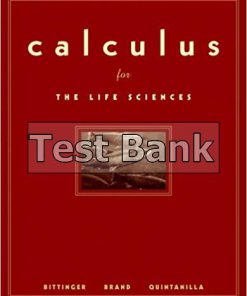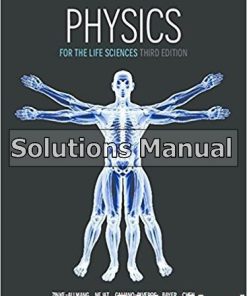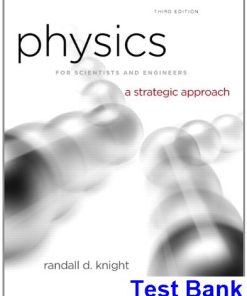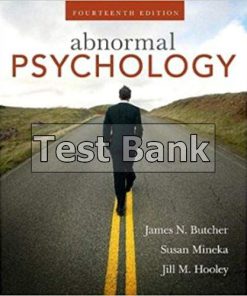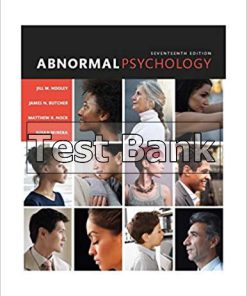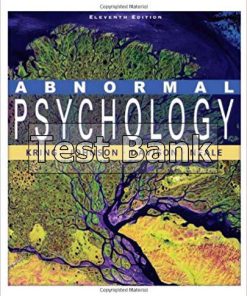Physics for the Life Sciencesn 3rd Edition Allmang Test Bank
You may also like
Physics for the Life Sciencesn 3rd Edition Allmang Test Bank
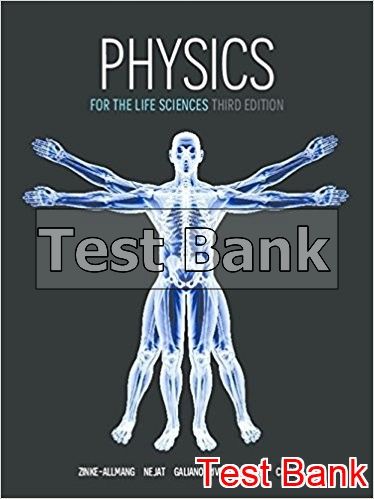
Product Details:
- ISBN-10 : 9780176558697
- ISBN-13 : 978-0176558697
- Author: Martin Zinke-Allmang
Physics for the Life Sciences, Third Edition, brings the beauty of physics to life. Physics represents an enormous body of knowledge and methodology, and almost all of it has a huge impact on understanding the life sciences. Physics for the Life Sciences provides a comprehensive synopsis of the vast subject matter and delivers it in a way that is relevant to students’ interests and career aspirations and that encourages retaining acquired knowledge. Taking an algebra-based approach to the selective use of calculus, the third edition provides a concise approach to basic physics concepts using an engaging layout, a consistent and student-tested art program, extensive use of conceptual examples, analytical problems, and instructive and engaging case studies. Breathe life into your Introductory Physics course with Physics for the Life Sciences.
Table of contents:
- PART 1 THE MECHANICS OF BIOLOGICAL SYSTEMS
- CHAPTER 1 Physics and the Life Sciences
- 1.1: The Predictable Universe
- 1.2: Significant Figures
- 1.3: Scientific Notation
- 1.4: Units of Measure
- 1.5: Dimensional Analysis
- 1.6: Proportionality
- 1.7: Order of Magnitude Estimation
- CHAPTER 2 Kinematics
- 2.1: Setting Up the Coordinate System
- 2.2: Motion in One Dimension
- 2.3: Motion in Two Dimensions
- 2.4: Uniform Circular Motion
- 2.5: Physiological Detection of Velocity
- 2.6: Physiological Detection of Acceleration
- CHAPTER 3 Forces
- 3.1: What Is a Force?
- 3.2: Properties of a Force
- 3.3: Action of a Force
- 3.4: Measuring Forces
- 3.5: Categories of Forces
- 3.6: Fundamental Forces
- 3.7: Non-fundamental Forces
- 3.8: Free Body Diagram
- 3.9: Equilibrium
- 3.10: Muscles as Origin of Forces
- 3.11: Can Our Bodies Detect Forces?
- CHAPTER 4 Newton’s Laws
- 4.1: Newton’s Laws of Motion
- 4.2: Free Body Diagram, Revisited
- 4.3: Newton’s First Law
- 4.4: Newton’s Second Law
- 4.5: Newton’s Third Law
- 4.6: Application of Newton’s Laws, Non-fundamental Forces Revisited
- 4.7: Weight and Apparent Weight
- 4.8: Dynamics of Uniform Circular Motion and Centripetal Force
- 4.9: Physiological Applications of Newton’s Laws
- CHAPTER 5 Centre of Mass and Linear Momentum
- 5.1: Centre of Mass Definition
- 5.2: Linear Momentum and Impulse
- 5.3: Newton’s Third Law Applied to Internal Forces
- 5.4: Conservation of Linear Momentum
- CHAPTER 6 Torque and Equilibrium
- 6.1: Force and Extended Object
- 6.2: Torque
- 6.3: Mechanical Equilibrium for a Rigid Object
- 6.4: Classes of Levers and Physiological Applications
- 6.5: Torque and Rotational Motion
- 6.6: Since When Did Hominids Walk on Two Legs?
- PART 2 ENERGY, THERMODYNAMICS, AND TRANSPORT PHENOMENA
…
People Aslo Search:
university physics for the life sciences
introductory physics for the life sciences
what is physics for life sciences
introduction to biological physics for the health and life sciences
is physics for life sciences hard
physics natural sciences baruch college new york reviews
physics for life sciences online course
physics and life science careers
physics life science definition
Physics for the Life Sciences 3rd Edition Allmang Solutions Manual

